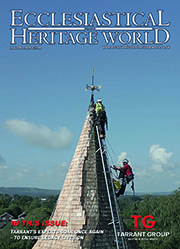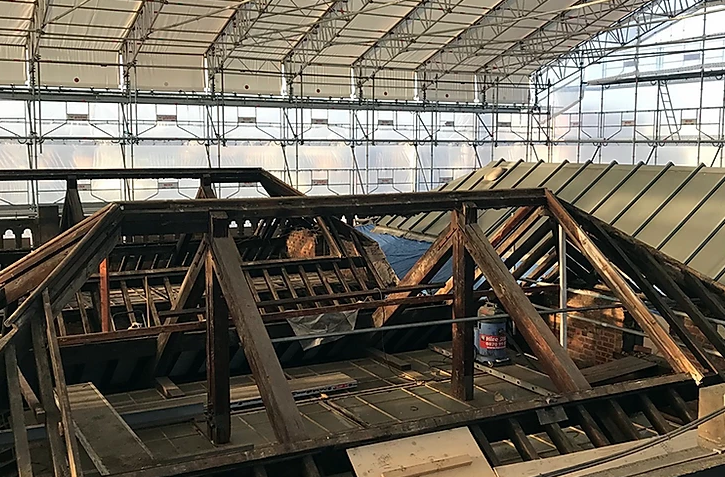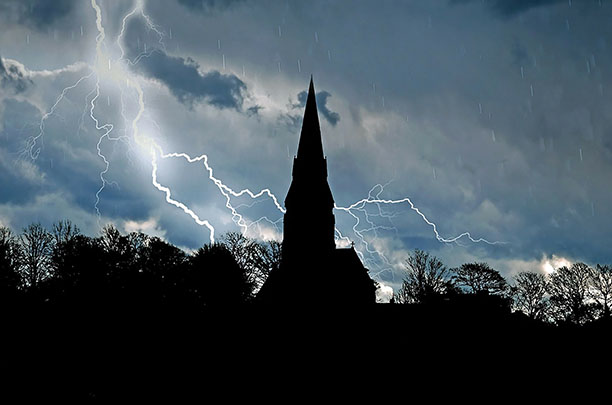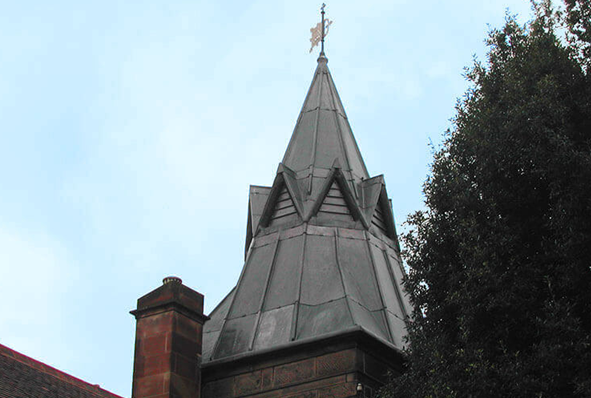Heritage Roofing
Heritage roofing - maintaining our iconic buildings
The UK is home to some of the most iconic buildings in the world, from stunning churches and cathedrals to historic stately homes. Each and every one of these remarkable feats of architecture requires regular maintenance to ensure they remain in the very best condition, allowing them to be enjoyed for generations.
Lightning Protection
When lightning strikes are you protected against this act of God?
The issue of lightning protection in churches is one that has exercised this publication for many years. In this four-part series of spotlights on the issue we will be revisiting various aspects of the subject, beginning with an overview of current thinking.
Traditional Lime
Lime: it’s better for buildings – and for the environment
It is now fairly well known that cement is not good for old buildings and that lime mortar should be used. But why? What are the advantages and what are the disadvantages? In order to begin to answer those questions it is necessary to understand the nature of traditional building, the process by which buildings used to be built, and how it differs from modern construction, the process by which we build today.
Audio Visual
Audio visual equipment in church buildings
This guidance is issued by the Church Buildings Council under section 55(1)(d) of the Dioceses, Mission and Pastoral Measure 2007. As it is statutory guidance, it must be considered with great care. The standards of good practice set out in the guidance should not be departed from unless the departure is justified by reasons that are spelled out clearly, logically and convincingly.
Read More...
CRE Events
Churches are coming under starter’s orders for CRE 25
Churches across the nation are beginning to make preparations for their visit to Christian Resources Exhibition’s CRE 25.
Insurance
You need to ensure that reasonable precautions are in place at your church to keep it safe for those who use it. To do this, you need to think about what might cause harm to people.
You will then need to decide if the precautions already in place are adequate. If they are not, you may need to identify further action to prevent any danger. When done formally, this is known as a risk assessment.
LPOW Grants
£23 million government package to support restoration of thousands of listed places of worship
Heritage Minister Sir Chris Bryant has announced that the Listed Places of Worship Grant Scheme will be extended into the next financial year, providing £23 million so that thousands of historical buildings, including churches, synagogues, mosques and temples, can carry out restoration work.
Lead Roofing
Lead is one of the oldest materials in the roofing industry and is still commonly used throughout the world today.
Lead roofing is a traditional roofing method which has been used in the industry for hundreds of years, and is therefore proven to be extremely reliable. Lead roofing, and sand-cast lead, in particular is ideal for old buildings such as churches or historical renovations, whereas milled lead roofing is a mass-produced alternative, used for precision and accuracy in homes and commercial buildings alike.
Home
MAGDALEN COLLEGE CANDLESTICKS RETURNED TO CHAPEL
A pair of ‘man-sized’ 19th century copper alloy candlesticks have been returned to their original home, the Chapel of Magdalen College, Oxford, after being treated by a team of conservators at West Dean College.
The work was carried out for Magdalen College by metalwork students from West Dean’s Centre for Conservation and Making at the request of the Oxford Conservation Consortium, a collaborative conservation centre which provides the library and archive collections of 12 colleges and the National Trust with specialist care to preserve materials for current and future use.
The ‘Gothic Revival’ candlesticks which are Puginesque in style, consist of a main shaft made up of ornate octagonal columns and knops topped with a highly decorated sconce. These sections are decorated with foliage, avian, Apostle and Gothic arch themes. Four decorative ‘Evangelist’ figures are screwed symmetrically onto the crossshaped base, which itself contains decorative floral and geometric features. The candlesticks had been painted black, possibly as a Victorian mourning tribute.
Although structurally sound, the candlesticks had suffered extensive damage leading to misallignment and corrosion resulting from an accumulation of dirt, inexpert application of cleaning products and deterioriation of the wax coating and paint over a long period of time. Treatment included ‘dry cleaning’, removal of candle wax and wax coating, wet cleaning metal areas, removing active corrosion products, coating with microcrystalline wax, re-soldering and coating the metal surfaces with a wax tinted with a black pigment.
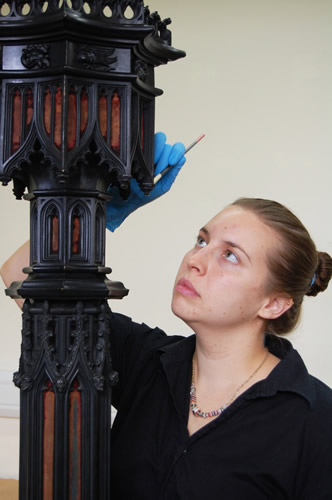
West Dean student Natalie Hardiing (Postgraduate Diploma in Conservation of Metalwork) working on one of the candlesticks
Two pairs of students worked on the candlesticks as part of their Postgraduate Diploma in Conservation of Metalwork (Belinda Hager, John Sullivan, Natalie
Harding and Rachel Weatherall), under the direction of Metalwork Tutor Jon Privett. Jon comments, ‘this is the first metalwork project we have undertaken for the Oxford Conservation Consortium. Our next commission for the OCC is already underway and our students will be working on a six-branch gas chandelier made from brass/copper alloy, made by Hardman & Co, which will also be situated in Magdalen College Chapel once it is returned at the end of this academic year’.







